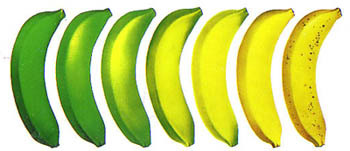The primary macronutrients of soil include: nitrogen, phosphorus, and potassium.
Nitrogen provides energy to the plant to allow vegetative growth. Plants that can grow fruits need plenty of nitrogen in the beginning of their growth cycle. Phosphorus makes plants more stress resistant, allows for fast growth, and encourages bloom and root growth. Potassium helps with the photosynthesis process and increases the quality of the fruit the plant produces.
The secondary macronutrients plants need include: calcium, magnesium, and sulfur.
Calcium helps with strengthening the cell wall structure. One can get calcium into plants from limestone, gypsum, eggshells, and antacids. Magnesium is required as part of the chlorophyll in order to do photosynthesis. One can get magnesium from Epsom salt or limestone. Sulfur is needed to allow plants to create protein, enzymes, and vitamins. It also helps with seed and root growth, and strengthens a plant’s resistance to cold.
Then there are the micronutrients, which plants consume in small amounts. These micronutrients should already exist in the soil, so they rarely need to be supplemented. They are important for plant growth. The micronutrients include: boron, copper, chloride, iron, manganese, molybdenum, and zinc.
Boron helps in the production of sugar and carbohydrates. It is essential for seed and fruit development. Copper helps in plant reproduction and can be derived from copper sulfate. Chloride helps with plant metabolism. Iron helps in the formation of chlorophyll in the plant’s chloroplasts. Manganese helps in the breakdown of carbohydrates and nitrogen. Molybdenum helps in the break down of nitrogen. Zinc regulates growth and consumption of sugars by the plant.
Boron helps in the production of sugar and carbohydrates. It is essential for seed and fruit development. Copper helps in plant reproduction and can be derived from copper sulfate. Chloride helps with plant metabolism. Iron helps in the formation of chlorophyll in the plant’s chloroplasts. Manganese helps in the breakdown of carbohydrates and nitrogen. Molybdenum helps in the break down of nitrogen. Zinc regulates growth and consumption of sugars by the plant.
A way to determine whether or not one’s soil has the appropriate amount of soils is to do a soil test. Simple soil test kits are available, which will measure the pH of the soil as well as the amount of nitrogen, phosphorus, and potassium present in the soil.
